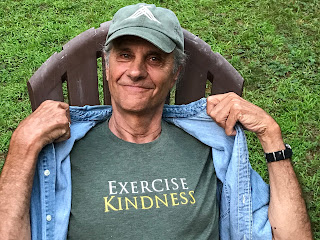What is this phenomenon called meeting for worship in a public school?
By Irene McHenry, Executive Director, Friends Council on Education
I suggest considering that Friends schools are by nature public schools in that they serve the general public. They are non-government schools that seek to educate a diverse study body, and therefore, the practice of meeting for worship in Friends school communities is very different from the religious practice of a Quaker meeting worship in a faith-based community. I find it miraculous that children and teenagers who come from diverse religious backgrounds, and sometimes no religious background, are not only able to “do” meeting - they often participate in meeting in heartfelt, insightful ways. Regardless of what the time period is called (Settling In, Silent Meeting, Friends Meeting, Circle Time, Collection, or Meeting for worship), regardless of where the meeting is held, it is an essential community practice, unique to Friends schools, in which everyone learns the skills of communal quiet sitting, patient and respectful waiting, active listening, and inspired speaking. Why does meeting work in a school with a diverse student body and a diverse faculty and staff? It works because the human capacity for reflection is great, the human gift for creative thought and expression is great, and the human need for belonging to a caring community is great. Meeting for worship speaks to these conditions in a universal way, and is adaptable to any age in an educational context.
I recently enjoyed rereading Mark Franek’s doctoral dissertation (University of Pennsylvania, 2007) on the impact of meeting for worship in a very diverse (by race, religion, socio-economic class) urban Friends school. His observations help me understand the unique nature of the meeting-for-worship phenomenon in school settings where most students and faculty are not Quakers.
I suggest considering that Friends schools are by nature public schools in that they serve the general public. They are non-government schools that seek to educate a diverse study body, and therefore, the practice of meeting for worship in Friends school communities is very different from the religious practice of a Quaker meeting worship in a faith-based community. I find it miraculous that children and teenagers who come from diverse religious backgrounds, and sometimes no religious background, are not only able to “do” meeting - they often participate in meeting in heartfelt, insightful ways. Regardless of what the time period is called (Settling In, Silent Meeting, Friends Meeting, Circle Time, Collection, or Meeting for worship), regardless of where the meeting is held, it is an essential community practice, unique to Friends schools, in which everyone learns the skills of communal quiet sitting, patient and respectful waiting, active listening, and inspired speaking. Why does meeting work in a school with a diverse student body and a diverse faculty and staff? It works because the human capacity for reflection is great, the human gift for creative thought and expression is great, and the human need for belonging to a caring community is great. Meeting for worship speaks to these conditions in a universal way, and is adaptable to any age in an educational context.
I recently enjoyed rereading Mark Franek’s doctoral dissertation (University of Pennsylvania, 2007) on the impact of meeting for worship in a very diverse (by race, religion, socio-economic class) urban Friends school. His observations help me understand the unique nature of the meeting-for-worship phenomenon in school settings where most students and faculty are not Quakers.
At
my Quaker school, I experienced something gratifying: a community under
construction, a process where the whole is greater than its parts, and yet the
parts matter, too. What I had witnessed during the 45 minutes of meeting for
worship was a communally constructed “text” of freely offered stories, told by
young and old, a genuine discourse on the enduring themes of love, friendship,
and community. And it would happen again and again, this interweaving of trials
and triumphs, these variations on universal themes. All educators and students
at Friends schools have similar stories to tell—let the zip code be what it
may…. The experience of meeting for worship [is] downright peculiar for the
vast majority of the community. Yet week after week, it works—an engine, a
catalyst, and a mirror for a host of complicated metamorphoses that
schoolchildren undergo during their formative years…. Meeting for worship is a
testament to the power of a Friends school education in the modern era, and one
more example of Quakerism’s gift to the world.
What have others noticed about this “downright peculiar”
phenomenon in Friends schools?


Comments
Post a Comment